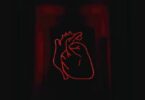Practice Questions on Heating Effect of Current:
Ques: A 60 watt bulb carries a current of 0.5 amp. The total chaNNrge passing through it in 1 hour is
(a) 3600 coulomb
(b) 3000 coulomb
(c) 2400 coulomb
(d) 1800 coulomb
Related: Questions on Electrochemistry
Ques: A constant voltage is applied between the two ends of a metallic wire. If both the length and the radius of the wire are doubled, the rate of heat developed in the wire
(a) Will be doubled
(b) Will be halved
(c) Will remain the same
(d) Will be quadrupled
Ques: Which of the following is not a correct statement
(a) Resistivity of electrolytes decreases on increasing temperature
(b) Resistance of mercury falls on decreasing its temperature
(c) When joined in series a 40 W bulb glows more than a 60 W bulb
(d) Resistance of 40 W bulb is less than the resistance of 60 W bulb
Ques: How much energy in kilowatt hour is consumed in operating ten 50 watt bulbs for 10 hours per day in a month (30 days).
(a) 1500
(b) 5,000
(c) 15
(d) 150
Ques: If 2.2 kilowatt power is transmitted through a 10 ohm line at 22000 volt, the power loss in the form of heat will be
(a) 0.1 watt
(b) 1 watt
(c) 10 watt
(d) 100 watt
Ques: In the above question, the power lost in the cable during transmission is
(a) 12.5 kW
(b) 6.25 kW
(c) 25 kW
(d) 3.15 kW
Related: Diversity of Living Organism Questions / Answers
Ques: You are given three bulbs of 25, 40 and 60 watt. Which of them has lowest resistance
(a) 25 watt bulb
(b) 40 watt bulb
(c) 60 watt bulb
(d) Information is insufficient
Ques: If a 30 V, 90 W bulb is to be worked on a 120 V line, a resistance of how many ohms should be connected in series with the bulb
(a) 10 ohm
(b) 20 ohm
(c) 30 ohm
(d) 40 ohm
Ques: 4 bulbs marked 40 W, 250 V are connected in series with 250 V mains. The total power is
(a) 10 W
(b) 40 W
(c) 320 W
(d) 160 W
Ques: An electric fan and a heater are marked as 100 watt, 220 volt and 1000 watt, 220 volt respectively. The resistance of the heater is
(a) Zero
(b) Greater than that of the fan
(c) Less than that of the fan
(d) Equal to that of the fan
Related: current electricity (Physics)
Ques: A heater draws a current of 2A when connected to a 250V source. The rate of energy dissipation is
(a) 500 W
(b) 1000 W
(c) 250 W
(d) 125 W
Ques: Three bulbs of 40W, 60W and 100W are arranged in series with 220V. Which bulb has minimum resistance
(a) 40W
(b) 60W
(c) 100W
(d) Equal in all bulbs
Ques: Three electric bulbs of rating 60W each are joined in series and then connected to electric mains. The power consumed by these three bulbs will be
(a) 180 W
(b) 60 W
(c) 20 W
(d) 20/3 W
Ques: The amount of heat produced in a resistor when a current is passed through it can be found using
(a) Faraday’s Law
(b) Kirchhoff’s Law
(c) Laplace’s Law
(d) Joule’s Law
Ques: Two bulbs, one of 50 watt and another of 25 watt are connected in series to the mains. The ratio of the currents through them is
(a) 2 : 1
(b) 1 : 2
(c) 1 : 1
(d) Without voltage, cannot be calculated
Ques: A 10 ohm electric heater operates on a 110 V line. Calculate the rate at which it develops heat in watts
(a) 1310 W
(b) 670 W
(c) 810 W
(d) 1210 W
Ques: Two bulbs of 100 W and 200 W working at 220 volt are joined in series with 220 volt supply. Total power consumed will be approximately.
(a) 65 watt
(b) 33 watt
(c) 300 watt
(d) 100 watt
Ques: Electric room radiator which operates at 225 volts has resistance of 50 ohms. Power of the radiator is approximately
(a) 100 W
(b) 450 W
(c) 750 W
(d) 1000 W
Ques: Two electric lamps of 40 watt each are connected in parallel. The power consumed by the combination will be
(a) 20 watt
(b) 60 watt
(c) 80 watt
(d) 100 watt
Ques: If two electric bulbs have 40 W and 60 W rating at 220 V, then the ratio of their resistances will be
(a) 9 : 4
(b) 4 : 3
(c) 3 : 8
(d) 3 : 2
Related: Ray optics questions
Ques: Two wires with resistances R and 2R are connected in parallel, the ratio of heat generated in 2R and R is
(a) 1 : 2
(b) 2 : 1
(c) 1 : 4
(d) 4 : 1
Ques: An electric heater kept in vacuum is heated continuously by passing electric current. Its temperature
(a) Will go on rising with time
(b) Will stop after sometime as it will loose heat to the surroundings by conduction
(c) Will rise for sometime and there after will start falling
(d) Will become constant after sometime because of loss of heat due to radiation
Ques: If two bulbs of wattage 25 and 30, each rated at 220 volts, are connected in series with a 440 volt supply, which bulb will fuse
(a) 25 W bulb
(b) 30 W bulb
(c) Neither of them
(d) Both of them
Ques: What is immaterial for an electric fuse wire
(a) Specific resistance of the wire
(b) Radius of the wire
(c) Length of the wire
(d) Current flowing through the wire
Ques: Some electric bulbs are connected in series across a 220 V supply in a room. If one bulb is fused then remaining bulbs are connected again in series across the same supply. The illumination in the room will
(a) Increase
(b) Decrease
(c) Remains the same
(d) Not continuous
Ques: The heat produced by a 100 watt heater in 2 minute will be equal to
(a) 12 x 103 J
(b) 10 x 103 J
(c) 6 x 103 J
(d) 3 x 103 J
Ques: A 25 watt, 220 volt bulb and a 100 watt, 220 volt bulb are connected in parallel across a 220 volt line. Which bulb will glow more brightly
(a) 25 watt bulb
(b) 100 watt bulb
(c) Both will have same brightness
(d) First 25 watt then 100 watt
Related: d and f block elements reasoning questions
Ques: The electric current passing through a metallic wire produces heat because of
(a) Collisions of conduction electrons with each other
(b) Collisions of the atoms of the metal with each other
(c) The energy released in the ionization of the atoms of the metal
(d) Collisions of the conduction electrons with the atoms of the metallic wires
Ques: A heater coil connected to a supply of a 220 V is dissipating some power P1. The coil is cut into half and the two halves are connected in parallel. The heater now dissipates a power P2. The ratio of power P1 : P2 is
(a) 2 : 1
(b) 1 : 2
(c) 1 : 4
(d) 4 : 1
Ques: 3 identical bulbs are connected in series and these together dissipate a power P. If now the bulbs are connected in parallel, then the power dissipated will be
(a) P/3
(b) 3P
(c) 9P
(d) P/9
Ques: A wire when connected to 220V mains supply has power dissipation P1. Now the wire is cut into two equal pieces which are connected in parallel to the same supply. Power dissipation in this case is P2. Then P2 : P1 is
(a) 1
(b) 4
(c) 2
(d) 3
Ques: A heater coil is cut into two equal parts and only one part is now used in the heater. The heat generated will now be
(a) One fourth
(b) Halved
(c) Doubled
(d) Four times
Ques: Two electric bulbs A and B are rated as 60 W and 100 W. They are connected in parallel to the same source. Then,
(a) Both draw the same current
(b) A draws more current than B
(c) B draws more current than A
(d) Current drawn are in the ratio of their resistances
Ques: An electric iron draws 5 amp, a TV set draws 3 amp and refrigerator draws 2 amp from a 220 volt main line. The three appliances are connected in parallel. If all the three are operating at the same time, the fuse used may be of
(a) 20 amp
(b) 5 amp
(c) 15 amp
(d) 10 amp






